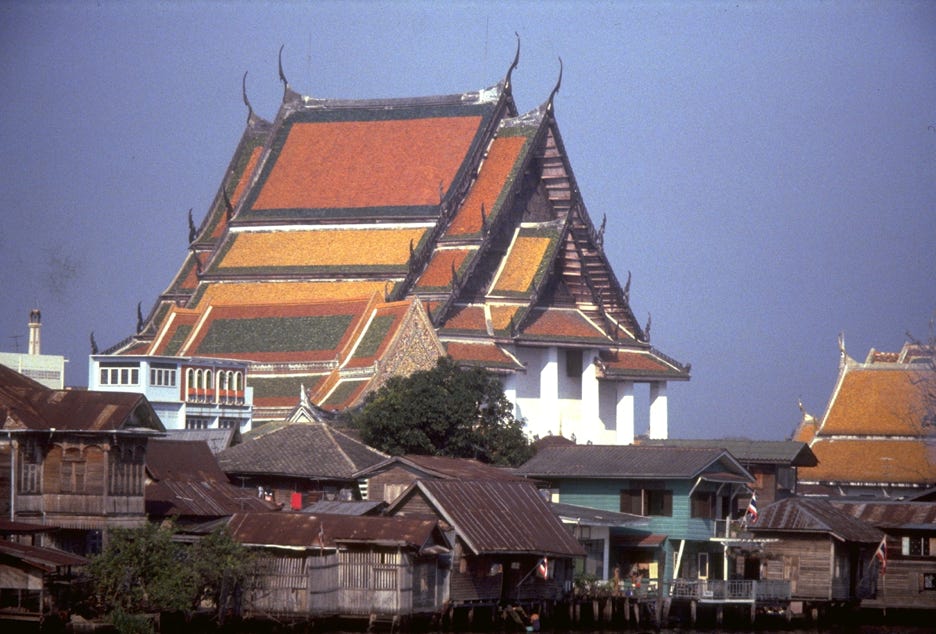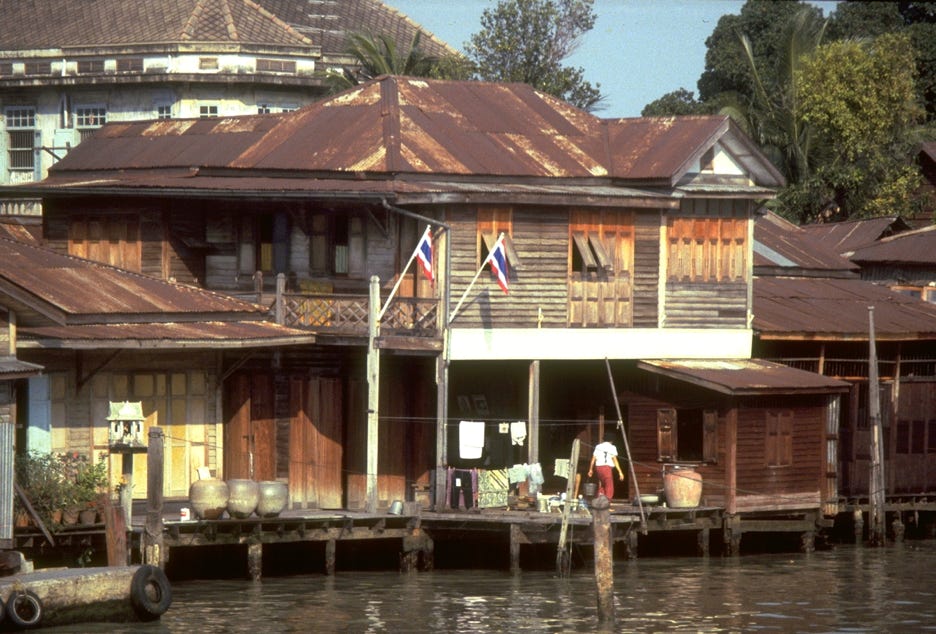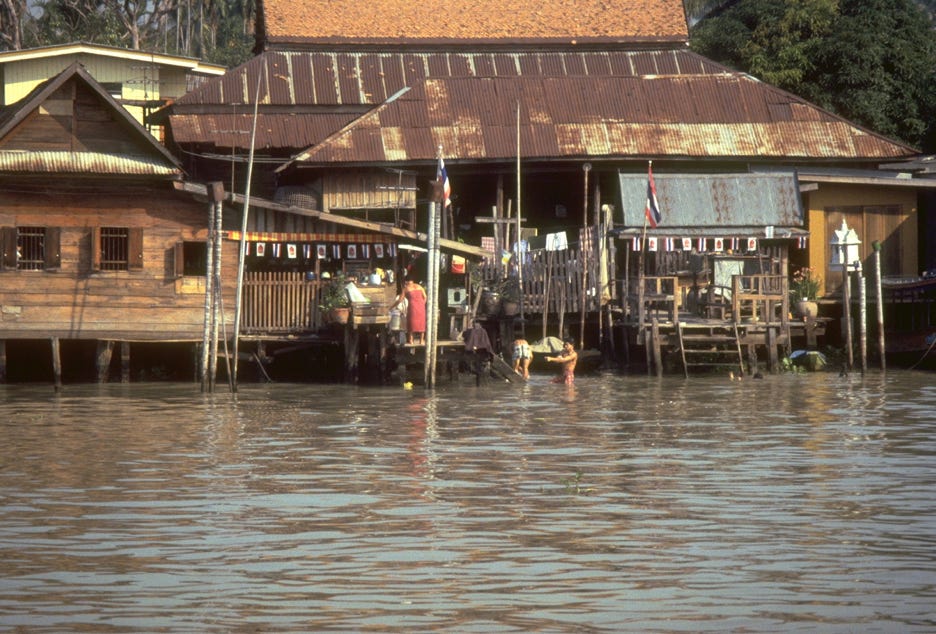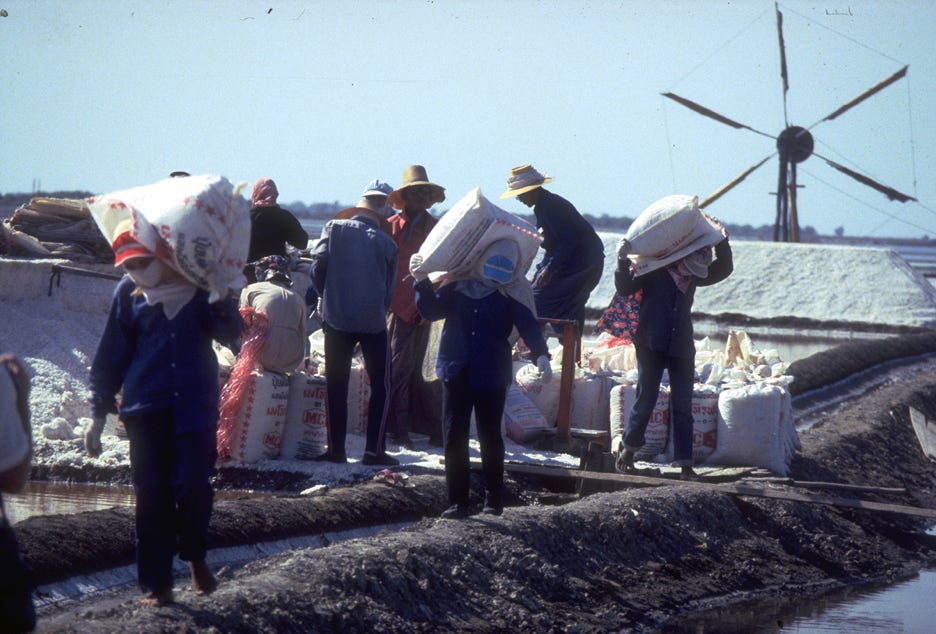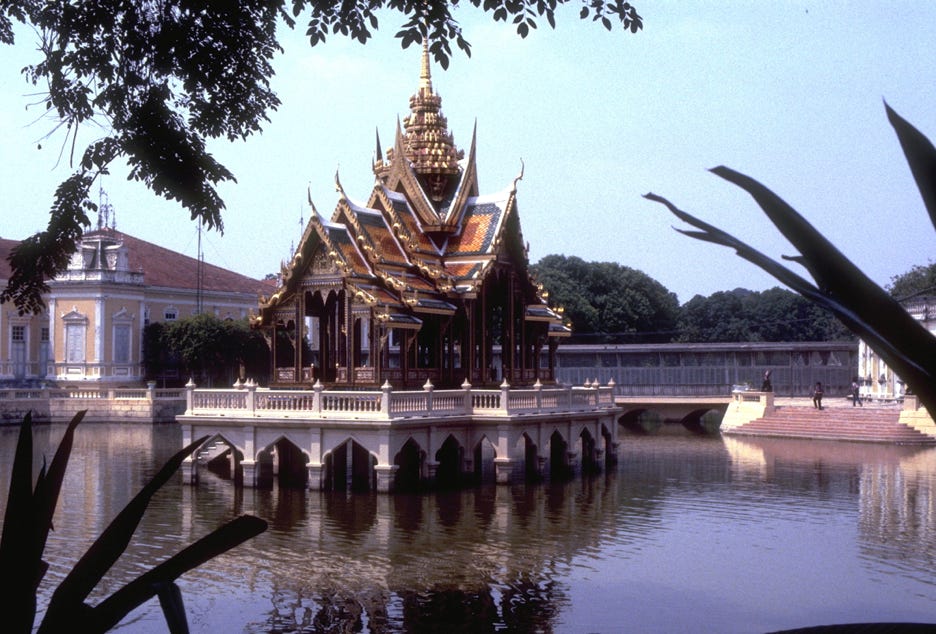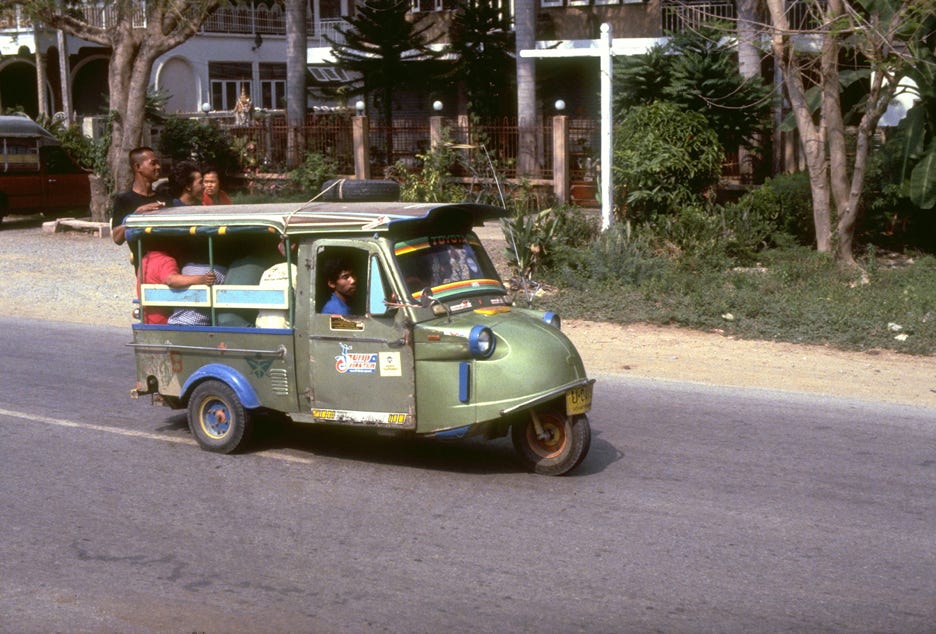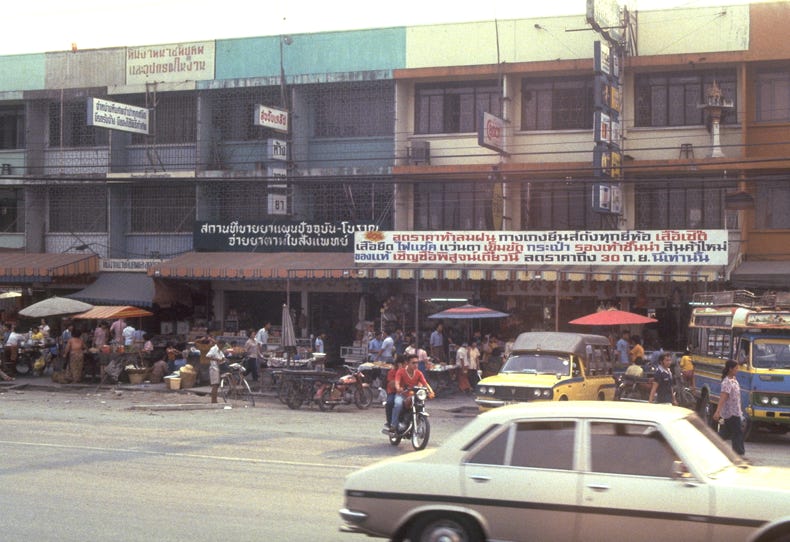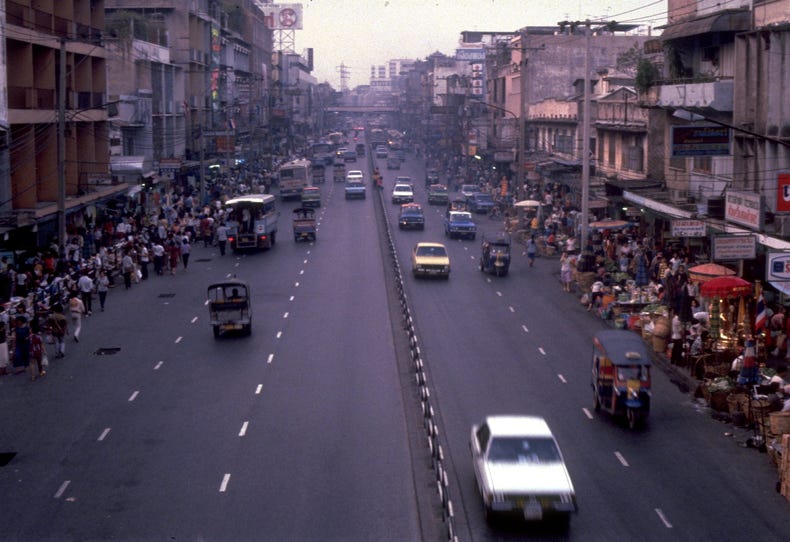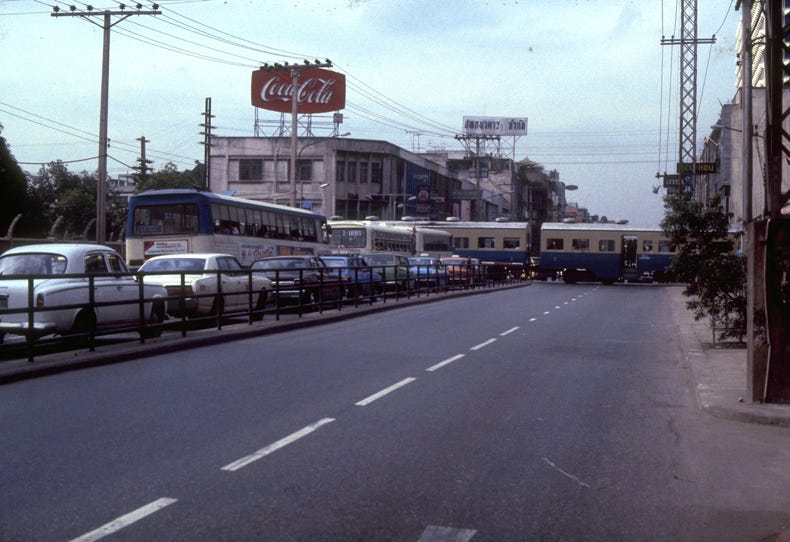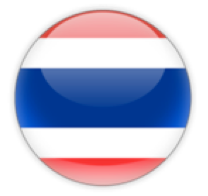

Today’s focus was a boat trip on the Chao Phraya River, and it was brilliant. I rose at 6:00am again, and after breakfast caught a taxi from the hotel to the starting point of the trip to the south-west of Bangkok. Taxis in Bangkok do not have meters, and like everything else in Bangkok, you have to bargain before you buy. There were three of us, and we negotiated a fare of 60 baht (really good to have a number divisible by three!).
The ride was quite an experience. I think there must be only one road rule in Thailand, which is “don’t go backwards”. Hair-raising would describe the trip well – lane-changing, tail-hugging, horn blowing – he did it all, just like every other driver on the road. When we arrived at a red light, the driver would turn off the engine, pick up his newspaper and start reading it. He spoke no English (which had made the bargaining something of a challenge) so I couldn’t ask him about it, but I gathered it just meant he knew there would be a long cycle at the intersection.
The boat for the cruise along the Chao Phraya was the “Orchid Queen”, a vessel capable of holding several hundred people. Morning activity on the Chao Phraya is lively and very photogenic, and an excellent way to see urban Bangkok. Once we were out of Bangkok, we passed through many rural villages and saw the transport of rice by barges, people washing, water taxis, and so on. We had lunch on board, a Thai smorgasbord.
The inside of the boat was air conditioned and the old ladies who had come with me couldn’t understand that I wanted to stay outside so as not to miss any photographs. I must admit it was very hot and humid, and probably not their idea of a ‘study tour’. Because this trip was separate from the GeogSoc study tour (that had scheduled a rest day), my travelling companions were an eclectic mix of Germans, Japanese, Americans, and so on – a great experience.
After the cruise of 4 hours and 45 minutes, we arrived at Bang Pa-In to be greeted (perhaps inevitably) by children performing somersaults in the water and then crying out “baht, baht, baht, baht, baht, baht”, together with the “you buy postcards, just say how much” from seemingly everyone over the age of four.
By this time, we were 60 kilometres north of Bangkok and the aim of the stop was to see the old Summer Palace. I took a few photos and bargained/bought a soft drink – by this time I was very thirsty.
We then moved on to Ayutthaya (or Ayudhya, depending on which brochure you’re reading), which was Thailand’s capital from 1350 to 1767 (when it was replaced by Bangkok after the Burmese invaded, looted and destroyed the city). Located 89 kilometres north of Bangkok , deep in the rice growing areas of the Central Plain of Thailand, it still has several large Khmer-style temples, somewhat similar to Angkor Wat in Kampuchea.
I managed to get to the bus that was to take us back into Bangkok just one minute before the onset of my first tropical downpour. There was a sudden gust of wind at 2:50pm, followed by a torrential downpour of pelting rain from 3:00 to 3:25.
We returned to Bangkok along the Asian Highway, Thailand’s best road, which goes on northwards to link Bangkok with Rangoon and Calcutta. We passed through many kilometres of rice padis , but as they are at the end of the dry season, there was almost nothing to see except a little burning off of the stubble. Actually, the flat land and the greyish appearance reminded me of the countryside between Hay and Balranald during a drought.
About 35 kilometres north of Bangkok we passed the largest industrial area I’ve seen in Thailand, centred on the Thai-American textile Company. I arrived at the hotel a little before 5:00pm.
Before dinner I went strolling again along Rajaprarob (or Ratchaprarop) Road, taking lots of photos of course (I’ve just finished by fourth 36-exposure film for the trip). Still being daylight, I even wandered along some of the back lanes. Simply fascinating.
For dinner tonight I had Nam Rajprarop, which is Thai jungle noodles prepared as a soup with chicken (but could also be had with pork, beef or shrimps). When the noodles are fried instead of being in a soup, the same dish is called Kway Tiaw Pat. All the dishes are accompanied by three wonderfully spicy sauces as optional additions.
Tomorrow we fly to Rangoon, leaving the hotel at 11:30am, and flying out at about 2:00pm. We have been told that the freedom to go street walking will be gone once we arrive in Burma, so I will try and squeeze in a final walk tomorrow morning. At least it will only be a day or two of confinement, and I’m sure Rangoon is interesting enough to be worth it.

